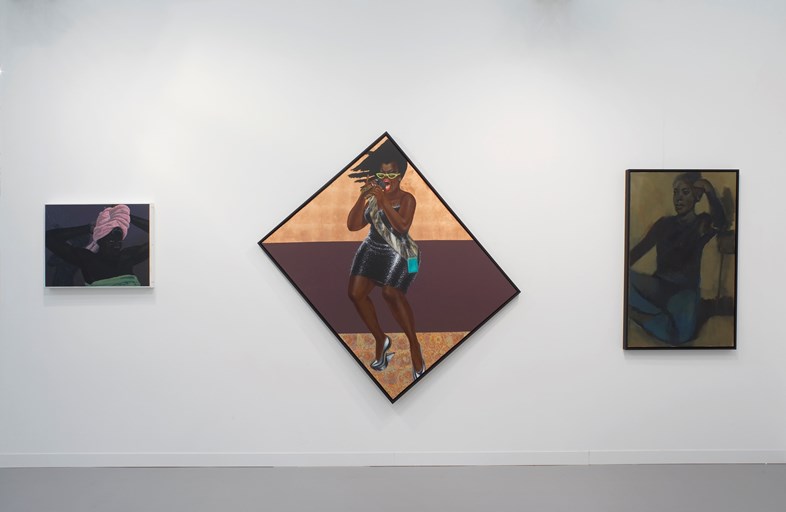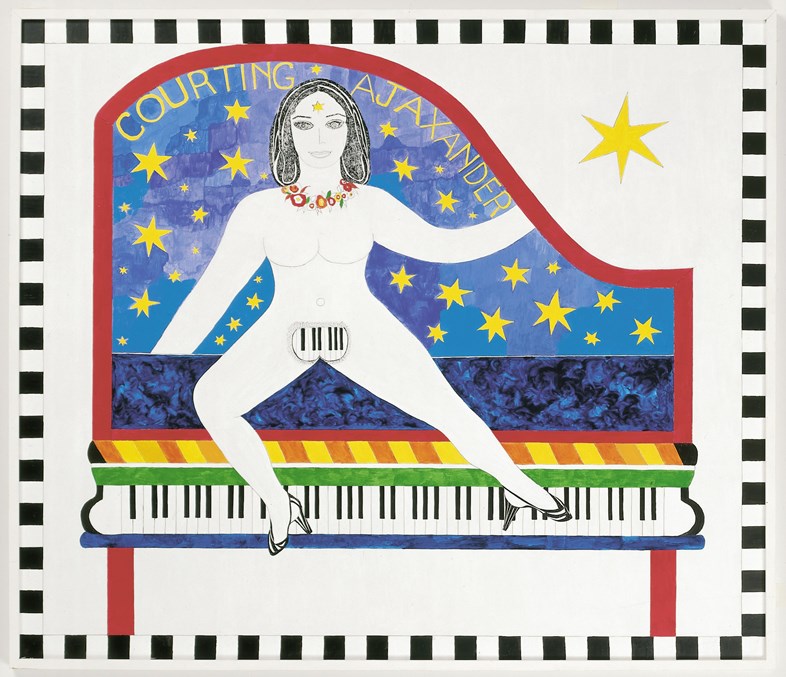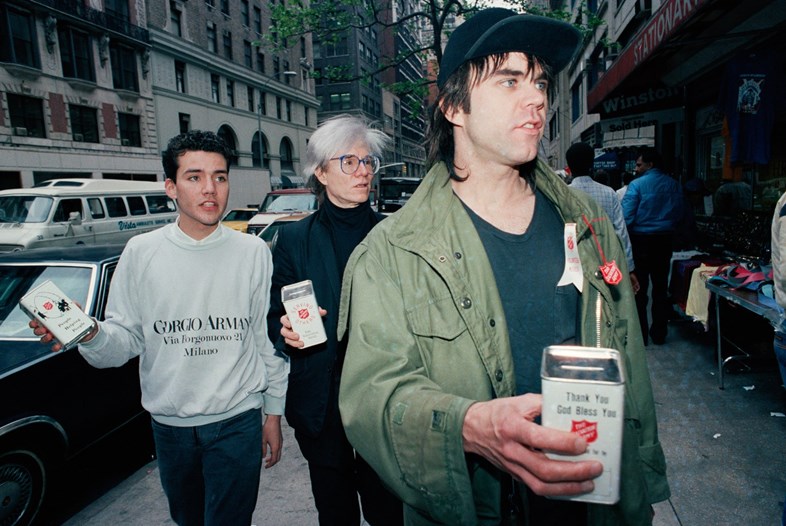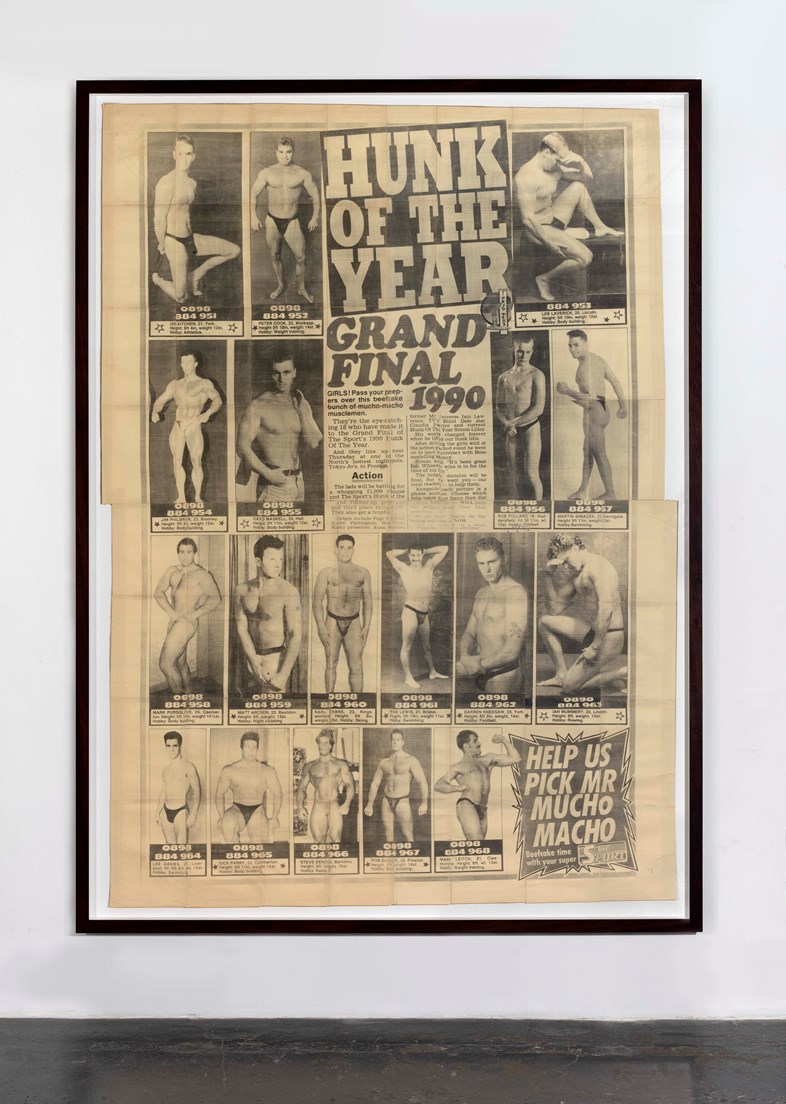This weekend 160 galleries took over Regent’s Park for London’s biggest art fair – here, Francesca Gavin selects five highlights
- TextFrancesca Gavin
The 15th edition of Frieze Art Fair saw 160 galleries bring their wares to the big tent in London’s Regent’s Park. When the fair opened at 11am for the preview on Wednesday, it was immediately rammed with buyers and advisors. Serious curators were brought in to give the art shopping some curatorial weight. Hayward director Ralph Rugoff oversaw the talks programme, American curator Alison Gingeras devoted a section to radical feminism and the Sculpture Centre’s Ruba Katrib helped advise the emerging Focus section. These were some of the highlights.
Blackness

African diaspora artists stood out above everyone for their quality and originality at the fair. Metro Pictures’ presentation of Gary Simmons’ large basketball-style banners were a great example but it was impossible to surpass Jack Shainman’s stand. On one wall he brought together three figurative paintings, from three generations of artists, creating a powerful, political take on the representation of women. At the centre was an energetic, diamond-shaped canvas of a dancehall queen in a sequin tube dress and neon sunglasses by the late Berkley Hendricks. To her left Kerry James Marshall’s blacker-than-black take on Venus in a bath towel, while Lynette Yiadom-Boakye’s loose, pensive portrait sat to the right. These were works that showed that painting didn’t have to fit in with the current naïve or abstract trends to get serious attention. They could just be very good paintings.
Sex Work

Alison M Gingeras was highly praised for her Dallas Contemporary show Black Sheep Feminism in 2016. She furthered her research at Frieze with a curated section of solo presentations of galleries showing female artists whose work was criticised or rejected for its sexual content in the 1970s and 1980s. There were a lot of penises here. The largest were Betty Tompkins grey-scale canvas as Galerie Andrea Caratsch, while the most playful were Dorothy Iannone’s pop-graphic penises and vaginas. There were some great discoveries to be made here, in particular artist and activist May Beth Edelson at David Lewis, which included her series of performative silver gelatin prints Woman Rising (1973-74), where she created a goddess monster archetype to fight the patriarchy.
More is More

When presented with a sea of galleries and big bold artworks, the way to make a statement appeared to be add more. There was a great salon hang at Office Baroque by photographer Robin Graubard, bringing together a cluster of her prints from 1985 to today. The pinned group of images gave far more through contrasts and comparisons, than if they floated alone. Meanwhile Hauser and Wirth created an entire fictional facsimile of a provincial museum for their fantastic ode to sculpture BRONZE AGE c. 3500 BC – AD 2017. Amongst ancient Roman coins and African heads were bronze works by their roster including Louise Bourgeois, Rashid Johnson and Mark Wallinger. The result was smart, informative and fantastical.
Tender Masculinity

Some of the most emotional works at the fair touched on the shaky ground of modern masculinity. An old yet very large piece by Sarah Lucas was an ideal example at London gallery Sadie Coles. Hunk of the Year 1990-1992 was a blown up page from tabloid newspaper The Sport, showing a grid of posing beefcakes presented for readers to help choose as that year’s “Mr Mucho Macho”. The amateur images had a desperation to them that foreshadowed our Instagram era. Another example of bruised masculinity was Jimmy Merris’ solo stand at Seventeen Gallery, featuring angst-filled blue-toned self-portraits, a fractured kinetic sculpture and a pile of monitors depicting a beating, broken heart.
Androgynous Egg
The Projects section the fair was not as sprawling, physical or present as in past years. However, Georgina Starr’s half-hour long sculptural performance piece Androgynous Egg was an utter joy. She directed a group of girls who wore vibrant long dresses, and even brighter tights, in a surreal and strange narrative involved chewing gum, dragging around chains of eggs attached to their underwear, operatic French poetry and acrobatics. The result was a funny, intimate and absorbing take on the erotic and poetic that expanded on her novel Empress 6699. This was the artist’s first London performance in a decade and announced her as a name that demands serious rediscovery. A perfect antidote to the market focus of gallery booths.











